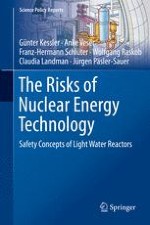2014 | OriginalPaper | Buchkapitel
20. Relevant Radiological Phenomena, Fundamentals of Radiological Emergency Management, Modeling of Radiological Situation
verfasst von : Claudia Landman, Jürgen Päsler-Sauer, Wolfgang Raskob
Erschienen in: The Risks of Nuclear Energy Technology
Verlag: Springer Berlin Heidelberg
Aktivieren Sie unsere intelligente Suche, um passende Fachinhalte oder Patente zu finden.
Wählen Sie Textabschnitte aus um mit Künstlicher Intelligenz passenden Patente zu finden. powered by
Markieren Sie Textabschnitte, um KI-gestützt weitere passende Inhalte zu finden. powered by
